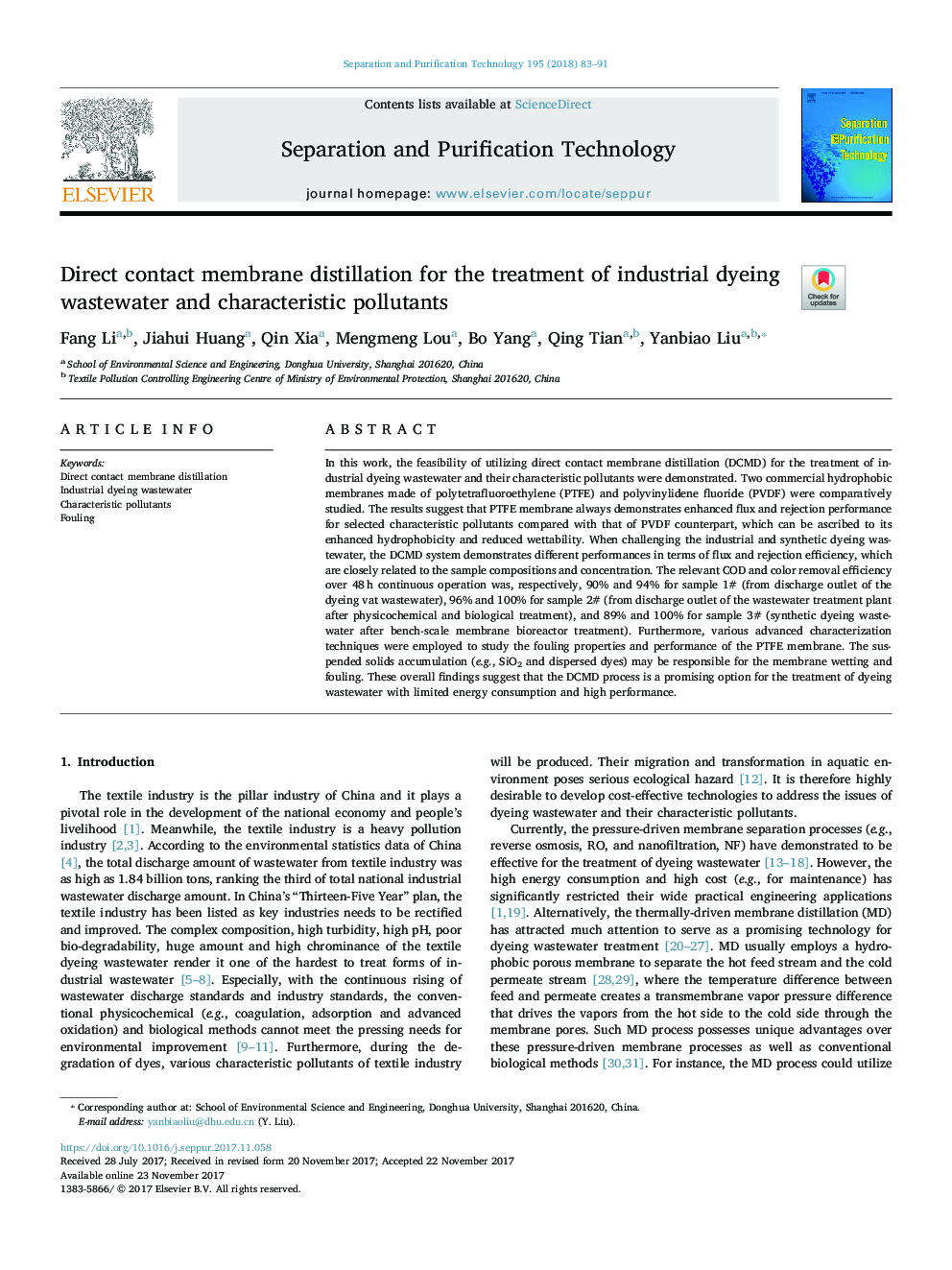| Article ID | Journal | Published Year | Pages | File Type |
|---|---|---|---|---|
| 7044004 | Separation and Purification Technology | 2018 | 9 Pages |
Abstract
In this work, the feasibility of utilizing direct contact membrane distillation (DCMD) for the treatment of industrial dyeing wastewater and their characteristic pollutants were demonstrated. Two commercial hydrophobic membranes made of polytetrafluoroethylene (PTFE) and polyvinylidene fluoride (PVDF) were comparatively studied. The results suggest that PTFE membrane always demonstrates enhanced flux and rejection performance for selected characteristic pollutants compared with that of PVDF counterpart, which can be ascribed to its enhanced hydrophobicity and reduced wettability. When challenging the industrial and synthetic dyeing wastewater, the DCMD system demonstrates different performances in terms of flux and rejection efficiency, which are closely related to the sample compositions and concentration. The relevant COD and color removal efficiency over 48â¯h continuous operation was, respectively, 90% and 94% for sample 1# (from discharge outlet of the dyeing vat wastewater), 96% and 100% for sample 2# (from discharge outlet of the wastewater treatment plant after physicochemical and biological treatment), and 89% and 100% for sample 3# (synthetic dyeing wastewater after bench-scale membrane bioreactor treatment). Furthermore, various advanced characterization techniques were employed to study the fouling properties and performance of the PTFE membrane. The suspended solids accumulation (e.g., SiO2 and dispersed dyes) may be responsible for the membrane wetting and fouling. These overall findings suggest that the DCMD process is a promising option for the treatment of dyeing wastewater with limited energy consumption and high performance.
Related Topics
Physical Sciences and Engineering
Chemical Engineering
Filtration and Separation
Authors
Fang Li, Jiahui Huang, Qin Xia, Mengmeng Lou, Bo Yang, Qing Tian, Yanbiao Liu,
